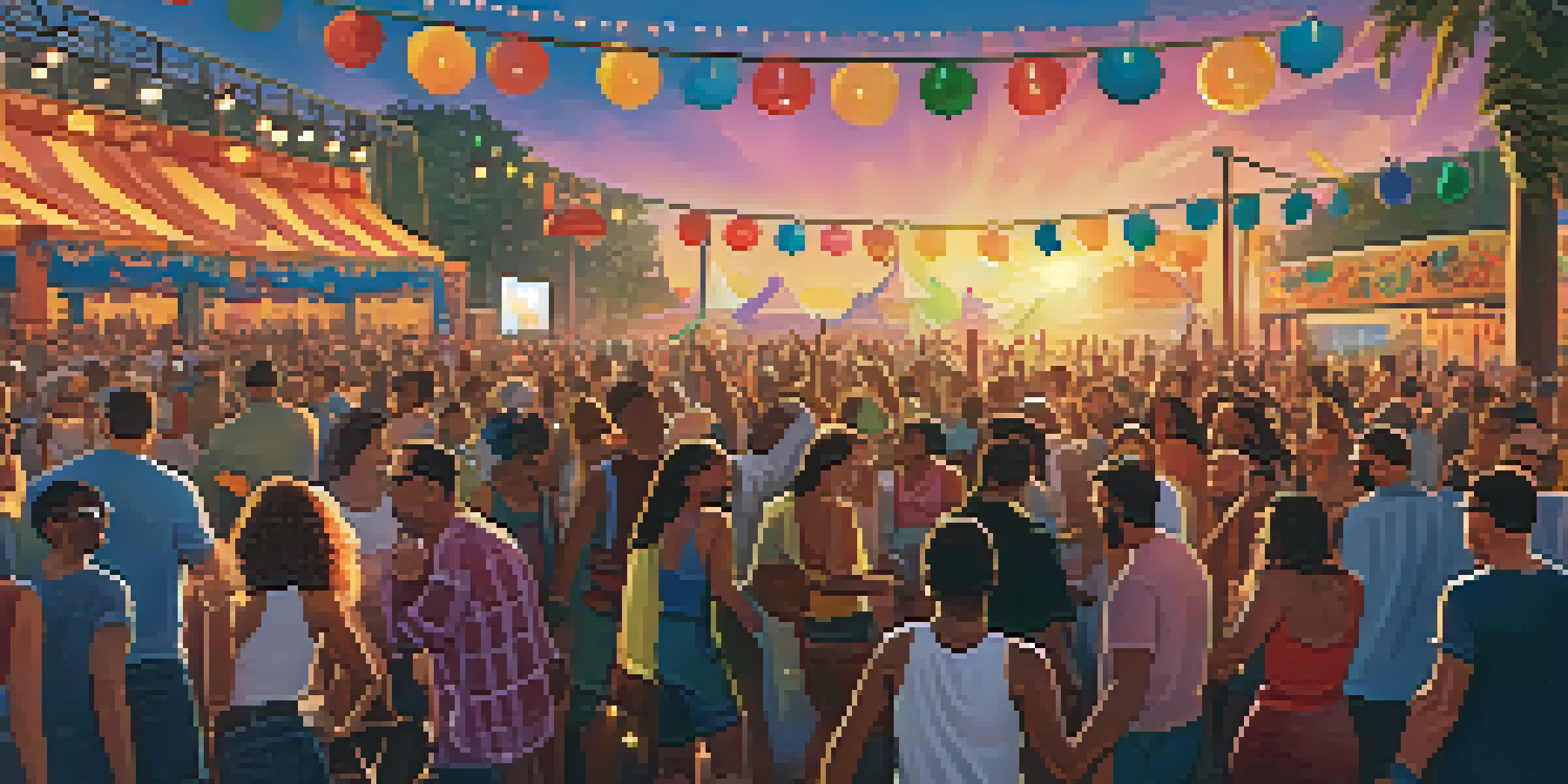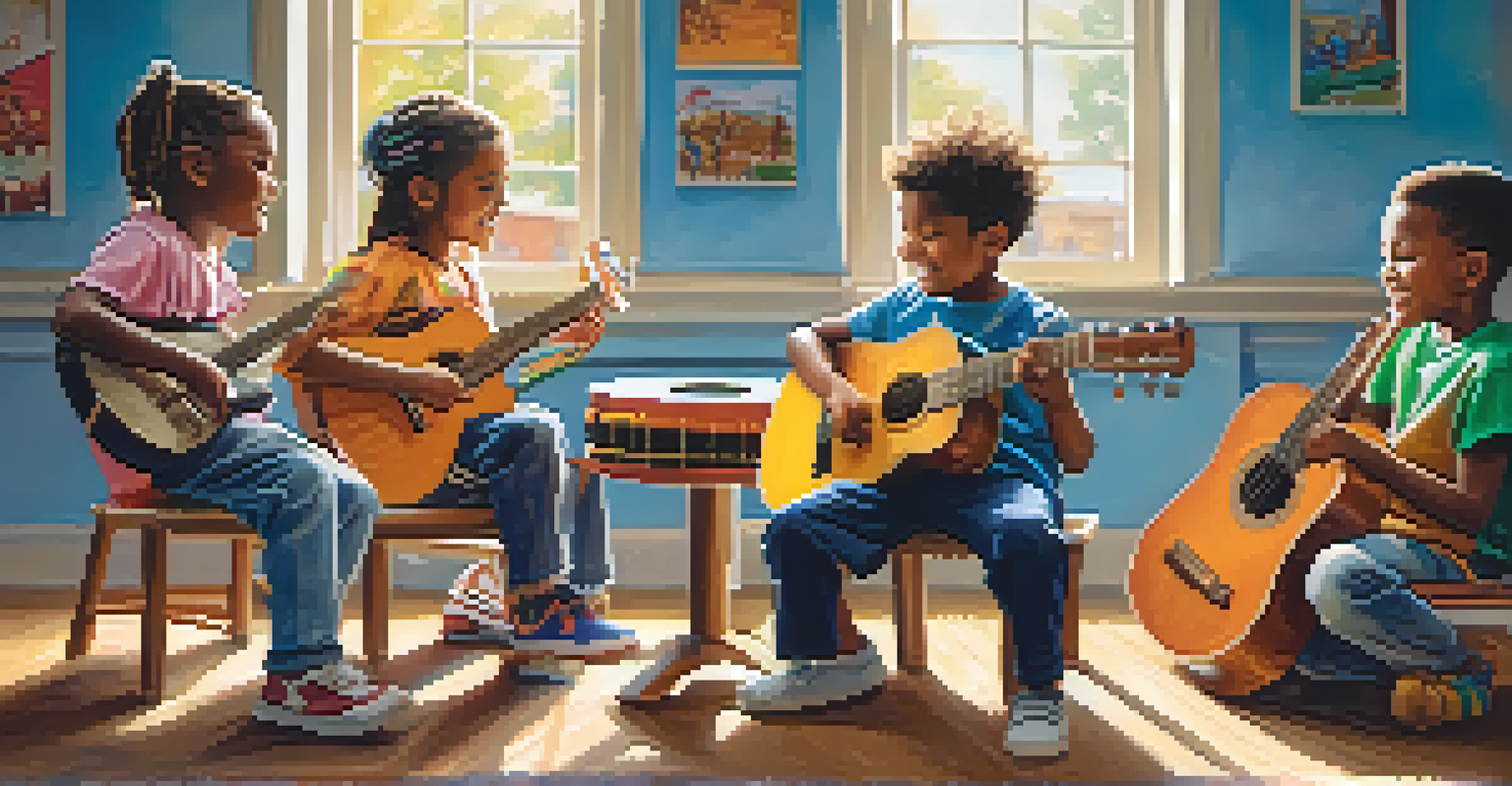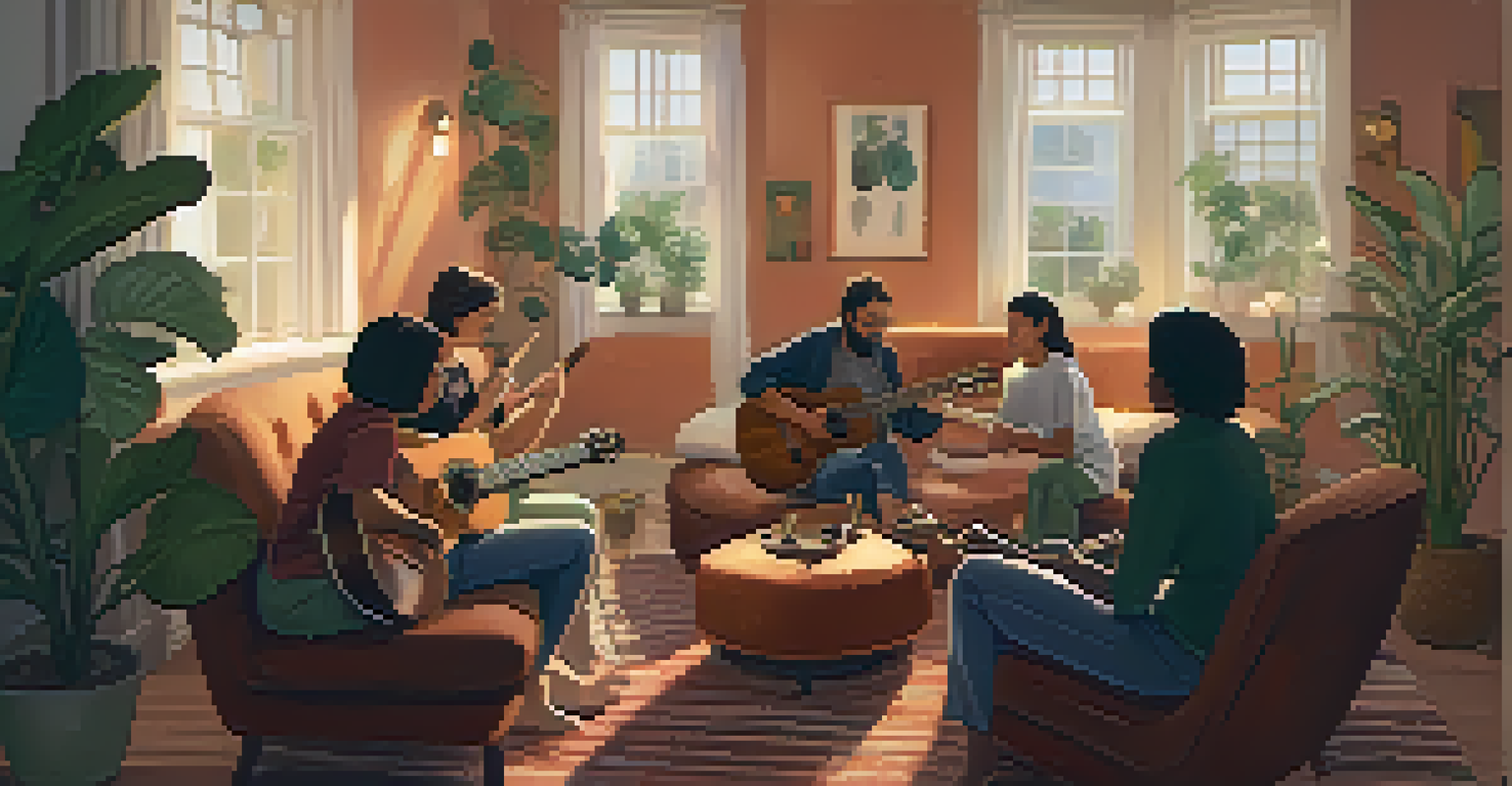How Music Fosters Community and Collective Identity

The Universal Language: Music as a Unifier
Music is often described as a universal language, transcending barriers of culture, age, and background. Whether it's a local band playing at a neighborhood festival or a global artist's hit song, melodies have a way of connecting individuals in profound ways. This shared experience fosters a sense of belonging, making people feel part of something larger than themselves.
Music can change the world because it can change people.
When people gather to enjoy music, they create a collective atmosphere where emotions and stories are exchanged. In these moments, differences fade away, allowing for a shared appreciation that strengthens community ties. Think of a concert where thousands sing along; the energy and connection felt in those moments are palpable and unforgettable.
Ultimately, music serves as a bridge between diverse groups, encouraging interaction and collaboration. This unifying power of music is foundational in building communities, as it invites people to come together, share experiences, and form lasting relationships.
Cultural Identity: How Music Reflects Heritage
Music is deeply intertwined with cultural identity, acting as a vessel for traditions, stories, and values. Different genres often reflect the histories and struggles of specific communities, providing a soundtrack to their experiences. For instance, folk music often tells tales of ancestral practices, while hip-hop emerged from urban narratives and social issues.

When individuals engage with music that reflects their cultural background, it reinforces their identity and fosters pride. This connection to heritage is not just personal; it resonates within communities, creating a shared narrative that binds people together. Community gatherings often feature traditional music, serving as a reminder of their roots.
Music Unites Diverse Communities
Music transcends cultural and social barriers, creating shared experiences that foster a sense of belonging among individuals.
Moreover, as communities evolve, so does their music, allowing for a dynamic expression of identity. This adaptability ensures that while traditions are honored, new influences can be woven in, creating a rich tapestry of collective identity that celebrates both the past and the present.
Creating Shared Experiences Through Live Events
Live music events, from intimate gatherings to large festivals, serve as powerful tools for community building. These experiences create a space where individuals can come together, share joy, and celebrate life. The collective energy found in these settings can be electric, leaving attendees with lasting memories and connections.
Where words fail, music speaks.
At a concert, the shared experience of listening to music creates a sense of unity among attendees, even if they come from different backgrounds. They share not only the music but also the emotions that come with it—joy, nostalgia, and sometimes even sadness. This powerful bonding experience fosters a sense of belonging that can ripple through the community long after the event has ended.
Furthermore, these gatherings often encourage local participation and support for artists, which helps strengthen community ties. As people rally around their local music scene, they contribute to an environment where creativity thrives, and relationships flourish.
Music and Social Movements: A Collective Voice
Throughout history, music has played a crucial role in social movements, giving voice to the marginalized and uniting people for a common cause. Songs like 'We Shall Overcome' during the Civil Rights Movement became anthems of hope and resilience, rallying individuals to stand together for change. In this way, music becomes more than just sound; it transforms into a powerful tool for social justice.
When people come together to sing or listen to songs that resonate with their struggles, they foster a sense of solidarity. This collective expression not only empowers individuals but also amplifies their message, drawing attention to important social issues. The emotional weight of music can inspire action and motivate communities to advocate for change.
Cultural Identity Through Music
Music reflects cultural heritage and identity, serving as a powerful medium for communities to preserve traditions and share their stories.
As movements evolve, new songs emerge, capturing the spirit of the moment and the aspirations of the people involved. This ongoing relationship between music and activism ensures that communities remain connected to their shared values and goals, using music as a rallying cry for their collective identity.
Music Education: Building Community Among Learners
Music education programs play a vital role in fostering community, bringing together individuals of various ages and backgrounds. Whether through school bands, community orchestras, or local choirs, these programs create spaces where people can learn, collaborate, and grow together. The act of making music as a group can forge deep connections and friendships.
In a music class or ensemble, participants not only develop their skills but also learn valuable lessons in teamwork and communication. They discover how to listen to one another, appreciate differences, and work towards a common goal. This collaborative spirit nurtures a sense of belonging that extends beyond the music itself.
Moreover, performances and showcases allow students to share their passion with the community, further strengthening those bonds. As families and friends come together to support these events, the entire community benefits from the shared experience of celebrating creativity and talent.
The Role of Technology in Modern Music Communities
In today's digital age, technology has transformed how music is created, shared, and experienced, broadening the scope of community building. Online platforms allow musicians to connect with audiences from around the world, breaking geographical barriers. This expansion means that communities can now form around specific genres, styles, or even social movements, regardless of physical location.
Social media and streaming services have made it easier for people to discover new music and engage with artists. Fans can participate in discussions, share playlists, and even collaborate on projects, fostering a sense of collective identity within these virtual spaces. As people bond over their favorite tunes, they create a digital community that rivals traditional forms.
Healing Power of Music
In community settings, music provides emotional support and promotes healing, helping individuals connect and find strength in shared experiences.
However, while technology offers new opportunities, it also presents challenges in maintaining meaningful connections. It's essential for these online communities to foster real engagement and support, ensuring that the essence of shared musical experiences isn't lost in the digital noise.
The Healing Power of Music in Community Settings
Music has a unique ability to heal, providing comfort and solace in times of distress. In community settings such as hospitals, nursing homes, or shelters, music therapy can offer emotional support and enhance well-being. The soothing sounds can create a sense of peace, fostering connections among individuals facing challenging circumstances.
When people come together to participate in music therapy or simply enjoy live performances, they experience a collective release of emotions. This shared experience can build trust and camaraderie, allowing individuals to feel less isolated in their struggles. It's a reminder that they are not alone and that there is strength in community.

Moreover, the healing properties of music can extend beyond individual experiences, promoting resilience within communities. By coming together through music, individuals can find hope, encouragement, and a sense of purpose, ultimately reinforcing their collective identity in the face of adversity.